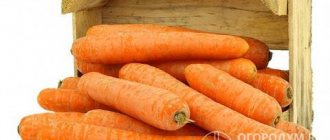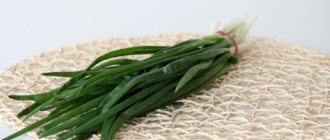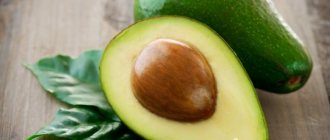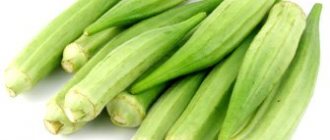Orange root vegetables, rich in vitamins, are beneficial for adults and children of any age. Carrots contain invaluable provitamin A or beta-carotene, which provides powerful nutrition to our cells and slows down the aging process.
All the kids adore the juicy, crunchy root vegetable. Elderly people prefer to eat it grated with a spoonful of sour cream or boiled as part of delicious salads. To please all household members, let's find out how to properly store carrots in the refrigerator so that they do not lose their freshness and unique properties.
Features of the structure of the vegetable
An important point is in what form carrots should be stored. Is this root vegetable fresh? If fresh, will it be frozen? Perhaps the carrots have already been processed into a finished product: boiled, turned into a snack or juice. All this will affect the conditions and shelf life. For long-term storage of fresh carrots, they should be carefully sorted, and root crops with traces of disease , damage, or simply uneven should be separated. Size also matters.
Attention : Carrots that are kept in the refrigerator for a long time should be approximately equal in size, not too big and not too small.
Is it possible to preserve root vegetables in the refrigerator?
Depending on the form in which you plan to store the carrots, you need to correctly determine the place where to place it. A modern refrigerator has locations suitable for different occasions : a compartment for prepared foods, a compartment for fresh raw vegetables and a freezer.
If you don’t mess with the location and comply with additional conditions in relation to the form factor in which the root vegetable is presented, then there will be no obstacles to using the refrigerator. Temperature conditions for storing carrots in the refrigerator:
- in the main compartment at a temperature from +2 to +6 degrees;
- in the “freshness zone” at a temperature from 0 to +3 degrees;
- in the freezer at a temperature of -8 to -23 degrees.
How long is the shelf life?
For processed vegetable
If we are talking about a finished product or a preparation, then the duration of preservation at home will depend on the specific case. Let's consider how long freshly squeezed carrot juice, boiled and Korean carrots can be stored.
- "Korean carrot - This is a ready-made dish from an orange root vegetable, which is grated and seasoned to taste, after which it is poured with highly heated vegetable oil. The composition of the gas station usually includes:
- table vinegar;
salt;
- sugar;
- red pepper.
- Boiled carrots are considered a fully cooked product, even if they are intended for some kind of salad. If you keep it in the refrigerator for more than two or three days, then the very appearance will no longer cause appetite. The carrots will become flabby or slimy in appearance and unpleasant. It is no longer worth eating it in this state.
- Freshly squeezed carrot juice is a tasty and healthy drink that is prepared by almost everyone who has a juicer. But it is extremely undesirable to store it: valuable properties are lost. If necessary, you can place the carrot juice in the refrigerator in a closed container for a couple of hours. But it is better to drink it immediately after preparation.
Korean carrots are usually infused for 12-14 hours until ready, after which they can be stored in the refrigerator for no more than two weeks.
For fresh carrots
Speaking of fresh (raw) root vegetables, you can count on the fact that with the right approach to storage, it will remain in the refrigerator for one to several months and at the same time remain a high-quality, tasty food rich in vitamins and microelements.
Frequently asked questions about storage and their answers
Even experienced gardeners are often faced with questions about how and where to properly store carrots so that they do not spoil until the next season. Let's look at the most popular questions on this topic.
If I dig up carrots half a month later, will they be more mature and stronger and will last longer? No, the optimal time for digging carrots is 100-120 days after planting. Is it necessary to sort carrots in winter and spring, or is it better to leave them in a calm state? It is optimal to sort through and sort out bad carrots once every 1-1.5 months.
How to properly prepare a root vegetable?
The steps before putting carrots into the refrigerator for storage often depend on personal experience and habits . Few people decide to make a sudden experiment if they are planning a long-term harvest of root vegetables, because a mistake can be costly.
The main difference is the almost Hamletian question “to wash or not to wash.” Some believe that washed root vegetables are stored better, others are inclined towards “grimy”.
Do I need to pre-wash?
To wash or not is a controversial issue. In support of carrot washing supporters, a number of advantages of this approach can be cited:
- all mechanical damage or its absence is immediately visible;
- traces of disease and decay are visible;
- parasitic microorganisms are removed;
- easier to sort through during storage.
The disadvantages include the fact that washed carrots are more demanding on storage conditions and undesirable proximity in the refrigerator . It also takes longer to dry before sending it for long-term storage. It's up to you to decide which is best.
How to preserve carrots longer?
Regardless of whether you washed the carrots or simply limited yourself to removing excess soil, the primary stage of preparing the root vegetable for storage in the refrigerator is to thoroughly dry it from excess moisture obtained during “bathing” or absorbed by the soil. Carrots that are clean after water can be thoroughly blotted with a towel and thus speed up the process. The washed carrots, ready for the next stage, will be dry to the touch and monochromatic. From an unwashed root crop, small particles of soil will fall off on their own when rubbed.
Washed and cleaned
Whole peeled carrots are rarely placed in the refrigerator for long-term storage . But if they have to, they don’t leave it open, because deprived of its natural “skin,” it quickly weathers and loses moisture.
Tip : A food-grade plastic container or film will extend the shelf life of peeled carrots for up to a month if stored in a special compartment of the refrigerator.
A proven method for short-term (3-4 days) storage of carrots in the main compartment of the refrigerator is to immerse them in water . And if you change the water, you can “cheer up” the carrots for up to a week.
We recommend watching a video about storing carrots in film in the refrigerator:
I'm grating
When placing grated carrots in the main compartment of the refrigerator, you need to take into account that in this form they will weather even faster than simply peeled ones. A container, a glass jar with a lid, or, in extreme cases, just a plastic bag will help.
Without freezing, the shelf life will not be long, so grated carrots should be eaten within 10-12 days.
Without freezing
For long-term storage, carrots should be packaged with great care . Examples of good packaging include vacuum bags and cling film. They will not allow excess moisture to penetrate and preserve the root juices. This is one of the most important conditions for long-term storage. If you are going to use film, then be prepared to work hard: it must tightly cover each carrot.
Sometimes wrapping in paper or a paper bag is used to absorb excess moisture. Such packaging will need to be periodically felt, checking for dampness, and replaced if necessary. If everything is done correctly, you will be able to protect the carrots from rotting and flabby.
Placement also matters. The lower the tier in the refrigerator on which you place freshly packaged carrots, the better . Ideally, this should be a compartment for vegetables. A working refrigerator maintains the optimal temperature and humidity ratio in this area.
- Some housewives use wrappers made from newspapers and other printed matter to regulate humidity. It is strongly not recommended to do this, since printing or printing ink may contain lead, cadmium and other substances that are not very beneficial for the body.
- If the carrots are purchased, then the tops have most likely already been removed. In this case, the place where it was torn off should be completely amputated. In the case when the carrot is your own, it is enough to simply trim the tops to the base.
- When you have a lot of carrots, it is better to trim the tops of the root vegetables quite strongly: by 1-2 centimeters. This will prevent them from germinating in the refrigerator.
So as not to become sluggish and flabby
Even with hermetically sealed carrots, there is still a risk of them softening, flabby and sprouting if the optimal humidity regime is not maintained. For carrots it is 65-75%. No less important is the temperature regime. Temperatures beyond -1 to 8 degrees are incompatible with long-term preservation of fresh carrots . Typically, the fruit and vegetable drawer maintains a range of 0 to 3 degrees. For carrots - just right.
For the whole winter
In addition to the rather troublesome preservation of fresh carrots in the “fresh zone” of the refrigerator, freezing them is practiced. Most often, grated or diced carrots are frozen for the winter. In this form, it can be stored throughout the cold season, although it loses some of its taste and beneficial properties. When placed in the freezer, it should also be packaged: in containers, vacuum packaging or plastic. In this form, carrots are suitable for frying, in vegetable stews and any dishes where the cook’s imagination dictates.
We recommend watching a video about freezing carrots for the winter:
And without a cellar and refrigerator?
The first thought that comes to mind for most is a storage box. But not everything is as simple as it seems at first glance, since the fruits need to ensure air circulation: the box must stand at a distance of at least 15 centimeters from the walls and floor. Therefore, it is worth considering other options for storing carrots in a cool place:
- in rows - film or burlap is spread on the shelves or floor, vegetables are placed on top in one layer. Once a month, carrots should be turned over to prevent them from wilting;
- in bags or bags made of polyethylene - it is this material that can maintain optimal humidity, so that the fruits do not rot. The main thing is to initially rinse the bags of dirt and dry them thoroughly. You cannot tie them, as this will cause an increase in the concentration of carbon dioxide and the crop will deteriorate;
- in glass jars or enamel pans - place the fruits so that they do not fit tightly to each other. Cover with a napkin on top, then with a lid;
- in onion peels - lay part of the peels on the bottom of the container, followed by a layer of carrots. Next, the layers are alternated until the fruit runs out or the container is full. Instead of husks, pine sawdust is also used.
These are the best options for storing carrots in an apartment besides the refrigerator.
You can often hear technologies for storing carrots in wet sand or dried clay. Firstly, a lot of time and effort is spent on such methods. Secondly, they do not guarantee the safety of the vegetable: carrots often rot in sand, and dry in clay. Therefore, we suggest considering a more reliable option - a refrigerator. The main thing is to know the secrets of proper preparation.
What to do if something goes wrong?
The most unpleasant thing that can happen to carrots in the refrigerator is their spoilage. Rotting, loss of pleasant strength or sprouting of carrots, as a rule, is due to violations of storage conditions. Let’s not talk about possible technical problems with the refrigerator, but rather talk about what depends on its owners.
If carrots are not stored in the freezer, then you should pay attention to the appearance of condensation inside the plastic or plastic packaging. These droplets can indicate the concentration of carbon dioxide inside the container or bag. If condensation is detected, the carrots should be removed, dried and repacked .
Preparing a cellar or basement for storing carrots
Before storing vegetables, you need to clear the cellar or basement of vegetable remains.
For carrots in the cellar or basement, you need to maintain an air humidity of 90-95%, as well as a temperature of -2...+2°C. There should also be ventilation in the basement, but of medium intensity, because with a large amount of air, root crops will begin to sprout.
Before harvesting, the basement must be insulated, groundwater protection and ventilation checked. Also, the containers and the basement itself need to be cleaned, disinfected and old vegetables, which can become a source of additional problems, removed. Disinfection can be carried out with the smoke of a sulfur bomb or using slaked lime.
Useful tips
- You need to make sure that carrots are not in direct contact with other vegetables or fruits. With apples - any close proximity should be excluded altogether. Apples emit ethylene, which can ruin the taste of carrots.
- For long-term storage, the variety of carrots is important. Among the hardiest are: “Moscow Winter”, “Vita Longa” and “Forto”. It is worth paying attention to varieties planted early.
- For winter storage, select only root vegetables that have reached maturity. Unripened ones may disappoint with quick spoilage.
There are many other ways to store carrots at home, including drying and drying.
What varieties of carrots are best stored?
Let's consider varieties of carrots that are better suited to long-term storage.
| Variety name | How many months does it keep? | ||
| 1 | Nantes 4 | Up to 6-8 | More details |
| 2 | Gueranda | Until 10-12 | More details |
| 3 | Moscow winter | Until 10-12 | More details |
| 4 | Forto | Until 7-8 | More details |
| 5 | Queen of Autumn | Until 8-10 | More details |
1
Nantes 4
Early variety - carrots can be harvested 50-60 days after planting. Unpretentious, has juicy pulp.
2
Gueranda
A tough carrot variety that stores well and spoils slowly. However, it has rather coarse flesh.
3
Moscow winter
Crispy and tough carrots, the length most often does not exceed 15 cm, are perfectly stored.
4
Forto
Carrots are very healthy and juicy, suitable for making juices. The variety is mid-early - harvested 80-90 days after planting.
5
Queen of Autumn
Another mid-season variety with tender and juicy pulp. Medium-sized carrots, suitable for long-term storage.











